Lesson summary
Students will identify the barriers and strategies to adopting clean energy. They will explore and analyse real-world case studies of Australians invested in clean energy adoption. Students will create a scientific communication piece to summarise their findings.
Learning intentions:
Students will...
- investigate barriers to adopting clean energy practices
- report the progress of communities that are overcoming these barriers.
Success criteria:
Students can...
- identify social, economic and political barriers to clean energy adoption
- write a scientific communication piece about the reality of clean energy adoption.
Lesson guides and printables
Curriculum links
Select your curriculum from the options below.
Lesson details
Skills
This lesson is designed to build students’ competencies in the following skills:
- critical thinking
- collaboration
- communication
- community engagement
- digital literacy
- global citizenship
Curriculum Mapping
Australian Curriculum (v9.0) content description:
Year 9, Science
Students learn to:
- analyse the key factors that contribute to science knowledge and practices being adopted more broadly by society (AC9S9H03).
Year 10, Science
Students learn to:
- analyse the key factors that contribute to science knowledge and practices being adopted more broadly by society (AC9S10H03).
Relevant parts of Year 9 Science achievement standards: Students analyse the different ways in which science and society are interconnected.
Relevant parts of Year 10 Science achievement standards: Students analyse the key factors that influence interactions between science and society.
NSW Syllabus outcomes:
A student:
- evaluates current and alternative energy use based on ethical and sustainability considerations (SC5-DIS-01).
General capabilities: Critical and Creative Thinking, Digital Literacy, Literacy, Personal and Social Capability, Ethical Understanding
Cross-curriculum priority: Sustainability
Level of teacher scaffolding: Medium - the teacher will be required to facilitate class discussions.
UN Sustainable Development Goals
- Target 4.7: By 2030, ensure that all learners acquire the knowledge and skills needed to promote sustainable development, including, among others, through education for sustainable development and sustainable lifestyles, human rights, gender equality, promotion of a culture of peace and non-violence, global citizenship and appreciation of cultural diversity and of culture’s contribution to sustainable development.
Resources Required
- The timeline of unleaded petrol activity sheet
- Device capable of displaying audiovisual material
- Student devices
- Student Worksheet
Additional Info
Cool.org thanks our philanthropic funder, Boundless Earth for their generous contributions and collaboration in creating these resources.
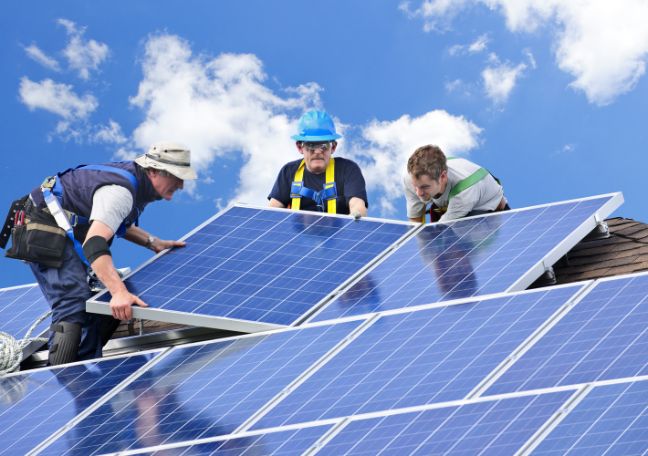
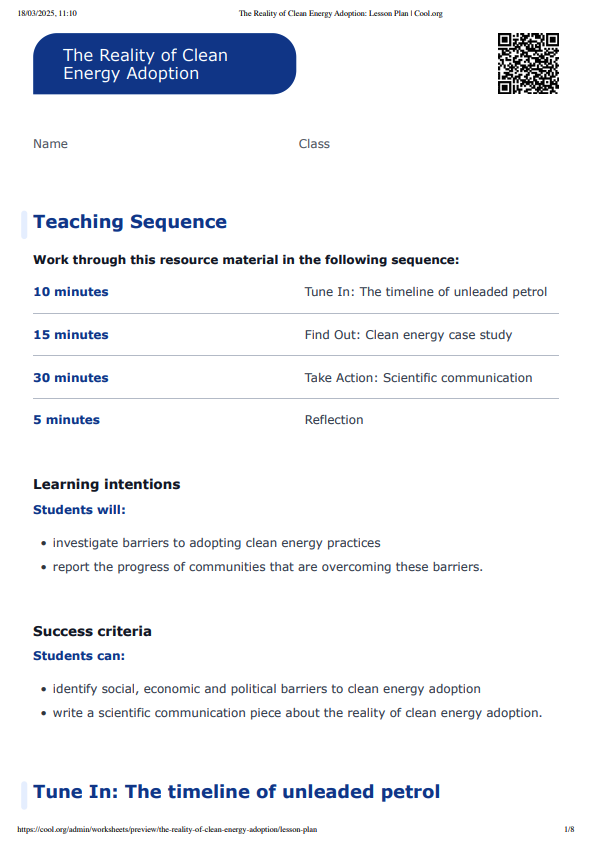
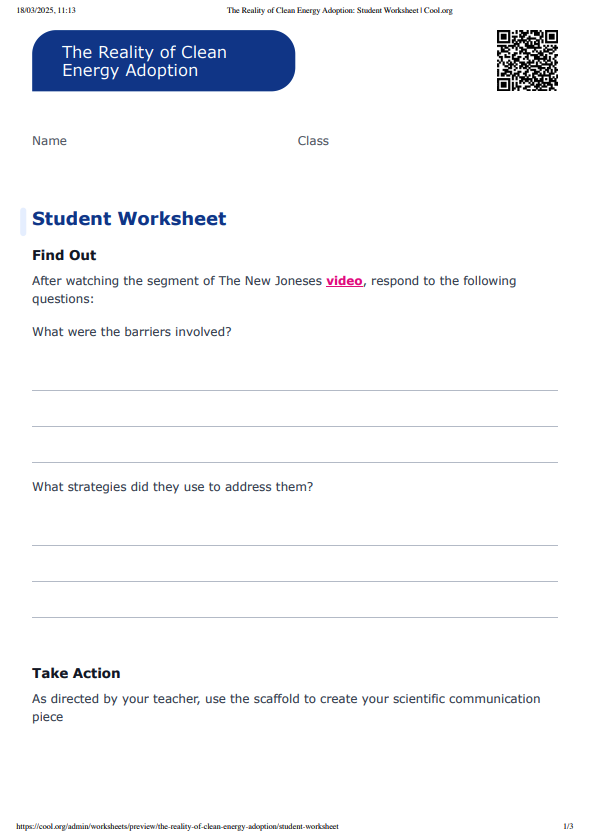
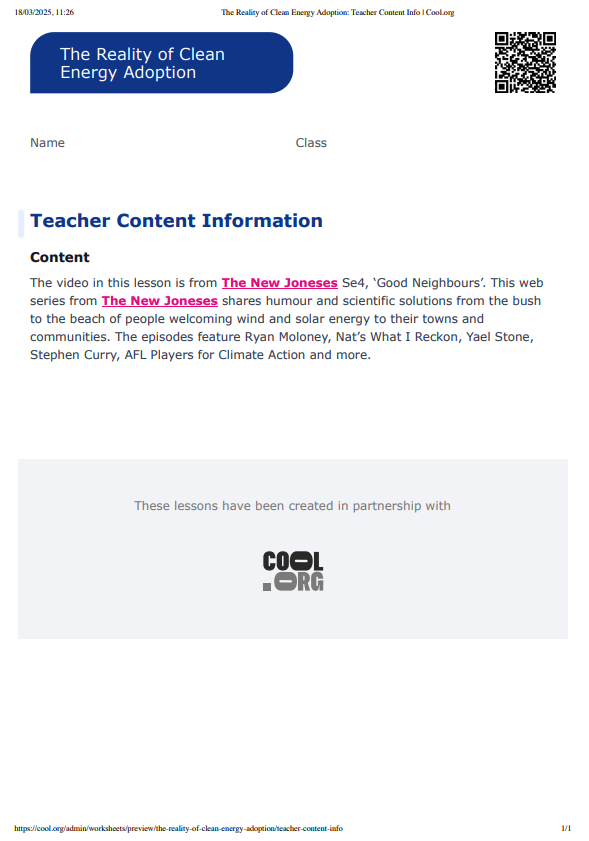
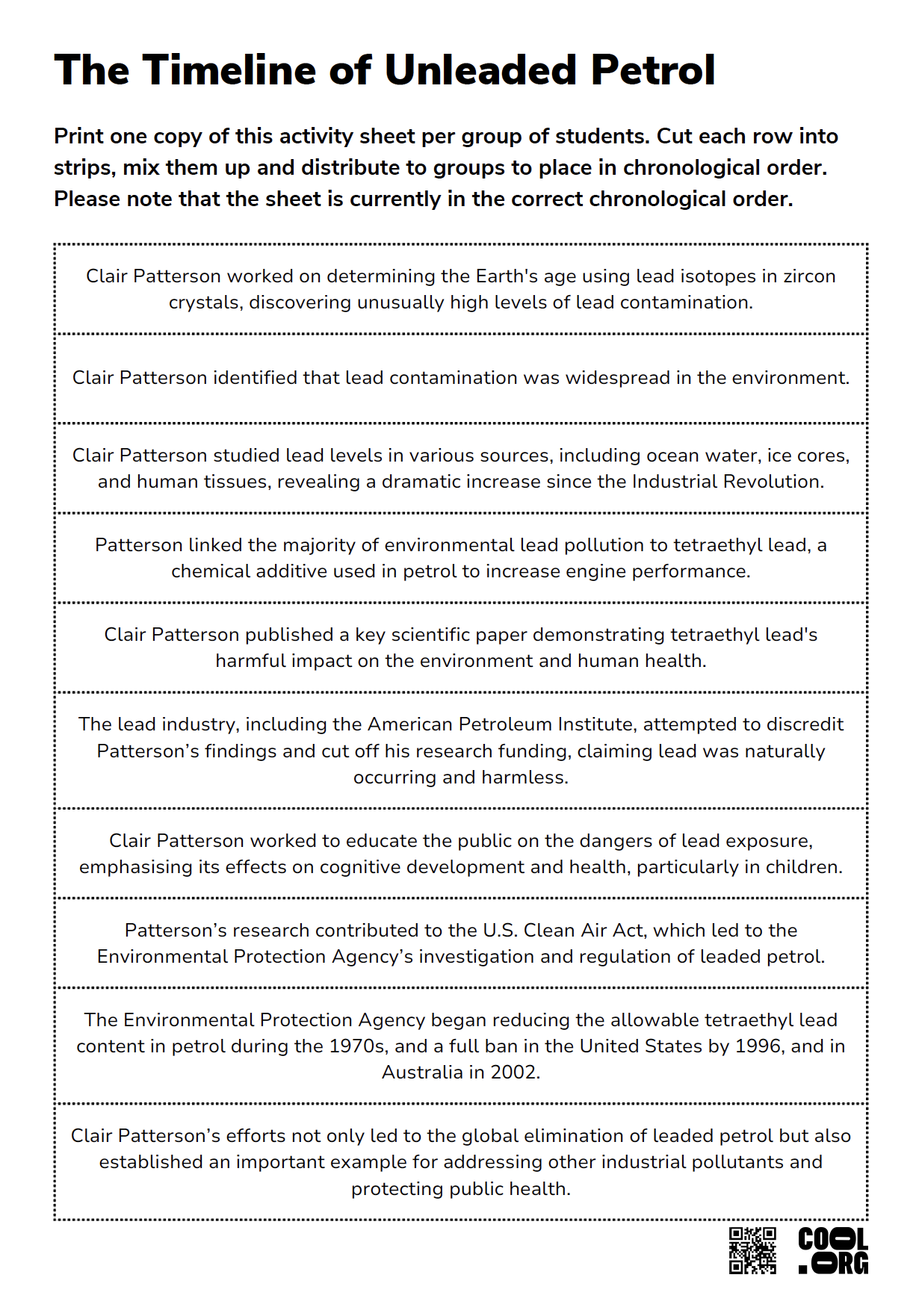
Welcome back!
Don't have an account yet?
Log in with:
Create your free Cool.org account.
Many of our resources are free, with an option to upgrade to Cool+ for premium content.
Already have an account?
Sign up with:
By signing up you accept Cool.org's Terms and Conditions(Opens in new tab) and Privacy Policy(Opens in new tab).